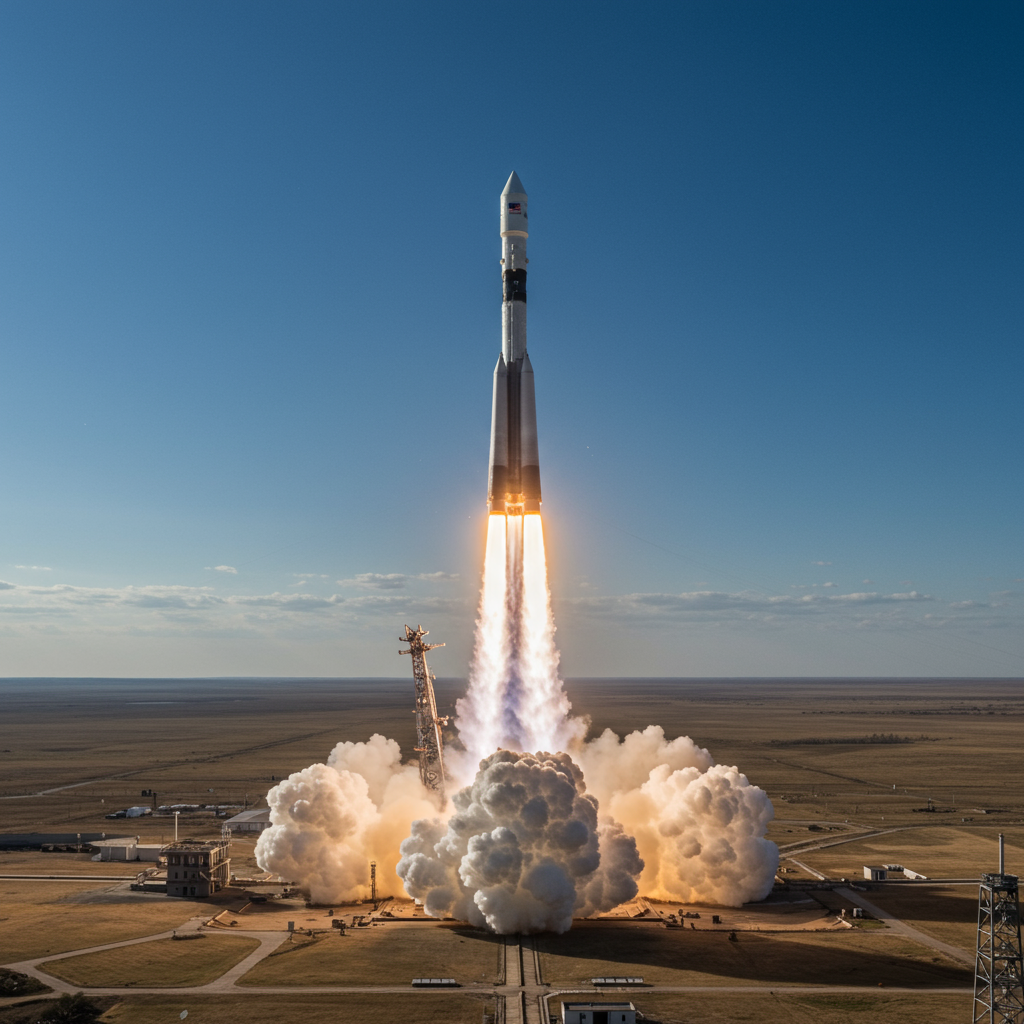A critical resupply mission is underway to the International space Station (ISS) following the successful launch of a Russian progress cargo spacecraft. This unpiloted vessel, designated Progress 92, lifted off precisely on schedule from the historic Baikonur Cosmodrome in Kazakhstan. The launch, powered by a reliable Soyuz rocket, occurred on Thursday, July 3, 2025, at 3:32 p.m. EDT (which was 12:32 a.m. local time on Friday, July 4 at the launch site).
Managed by Russia’s Roscosmos space agency, the Progress 92 is now safely in orbit. It carries a vital payload destined for the orbiting laboratory. This timely delivery ensures the continued operations and well-being of the crew living and working aboard the station.
Journey to the Orbiting Laboratory
The path from Earth orbit to the International Space Station is a carefully choreographed cosmic ballet. Following its powerful ascent, the Progress 92 spacecraft embarked on a two-day orbital chase. During this period, ground controllers meticulously track the craft. They perform precise maneuvers to align its trajectory with the station’s rapid orbital path. This journey sets the stage for an autonomous rendezvous and docking procedure.
The spacecraft is scheduled to reach the vicinity of the ISS on Saturday, July 5. The final approach and docking are complex automated processes. They rely on sophisticated navigation systems and control algorithms.
Docking Day Approaches for Expedition 73 Crew
The Progress 92 is slated to autonomously dock with the International Space Station at approximately 5:27 p.m. EDT on Saturday, July 5. Its destination port is the space-facing side of the station’s Poisk module. This module serves as both an airlock for spacewalks and a docking port for visiting vehicles. The arrival of the cargo craft is a highly anticipated event for the astronauts and cosmonauts of Expedition 73.
Space enthusiasts and the public can follow this critical space activity live. NASA plans to offer comprehensive coverage of the rendezvous and docking process. Coverage is set to begin at 4:45 p.m. EDT on the NASA+ streaming service. Additional updates and information are available through the space station blog and official NASA social media channels like @space_station on X.
Delivering Critical Supplies
The primary purpose of the Progress 92 mission is to deliver a substantial cargo load to the space station. The spacecraft is packed with approximately three tons of essential items. This payload includes food supplies to nourish the crew during their months-long stay in orbit. It also carries fuel to power the station’s propulsion systems and maintain its orbit. Additionally, a variety of other necessary supplies are onboard. These provisions are crucial for supporting daily life, operations, and ongoing scientific research aboard the ISS.
Progress vehicles are the backbone of Russian logistics to the ISS. They routinely transport vital resources. Beyond basic sustenance and fuel, these missions can include atmospheric gases like nitrogen to replenish the station’s air supply and potable water. Specialized equipment and materials for scientific experiments conducted by Roscosmos cosmonauts are also common cargo. This includes gear for studying microgravity’s effects on the human body, testing new materials, or even exploring novel life support systems like micro-algae cultivation.
The Workhorse of Space Logistics
The Progress spacecraft family has a long and distinguished history in spaceflight. Originating in the late 1970s, these unpiloted vehicles were initially developed to resupply the Salyut and Mir space stations. With the advent of the ISS program, the Progress design was refined. It continues its vital role as a workhorse for cargo delivery. Each launch represents another successful step in a decades-long effort to maintain a continuous human presence in low Earth orbit.
Progress missions are not just about bringing things up. Each spacecraft also serves a crucial secondary function. After its cargo is unloaded, the crew fills the Progress with trash and waste materials accumulated on the station. Following several months docked to the ISS, the loaded cargo ship undocks. It is then deliberately commanded to perform a deorbit burn. This sends the spacecraft on a path to burn up harmlessly in Earth’s atmosphere, typically over the South Pacific Ocean. This destructive reentry is a safe way to dispose of station refuse.
Life Support for Orbiting Crews
Maintaining a permanent human presence hundreds of miles above Earth is a monumental logistical challenge. Astronauts and cosmonauts require a steady stream of food, water, oxygen, and other consumables. They also need spare parts for equipment, new hardware for experiments, and personal items. Resupply missions like this Progress flight are therefore absolutely essential. They ensure the crew remains healthy, the station systems function correctly, and valuable scientific research can continue unimpeded.
While routine, each resupply mission requires precision and expertise from teams on the ground and the crew in orbit. Unloading tons of cargo, organizing supplies, and integrating new equipment are significant tasks for the astronauts and cosmonauts. Occasionally, unexpected situations can arise upon hatch opening, such as temporary odors from newly unpacked materials, which station procedures and ground support teams are well-equipped to handle. Ultimately, the successful arrival of each cargo craft represents a critical lifeline, connecting those living in space with the resources they need from Earth.
Frequently Asked Questions
What is a Progress cargo craft and what does it do for the ISS?
A Progress cargo craft is an unpiloted Russian spacecraft built by Roscosmos. It serves as a vital resupply vehicle for the International Space Station (ISS). Its primary role is to transport essential cargo like food, water, fuel, air, spare parts, and scientific equipment to the orbiting laboratory. After delivering its payload, it is filled with trash by the crew and later deorbited to burn up in the atmosphere, safely disposing of waste.
When is Progress 92 expected to dock and how can I watch?
The Progress 92 spacecraft is scheduled to autonomously dock with the ISS on Saturday, July 5, 2025, at approximately 5:27 p.m. EDT. It will connect to the Poisk module. NASA plans to provide live coverage of the rendezvous and docking. You can watch the event on NASA+ starting at 4:45 p.m. EDT on July 5.
What kinds of supplies does a Progress mission typically carry to the space station?
Progress missions carry a wide variety of supplies crucial for the ISS crew and operations. This includes basic necessities like food, fuel, water, and air (nitrogen). They also transport clothing, medical supplies, sanitary items, and spare parts for station maintenance. Furthermore, Progress ships deliver equipment and materials needed for ongoing scientific experiments conducted by the crew in microgravity.
A Critical Lifeline Arriving
The successful launch of Progress 92 marks another essential step in sustaining human presence in space. This mission, carrying three tons of vital supplies, is a critical lifeline for the Expedition 73 crew. As the spacecraft completes its two-day journey, anticipation builds for its arrival. The autonomous docking scheduled for Saturday afternoon will bring fresh resources and necessary equipment to the International Space Station, ensuring the crew can continue their important work orbiting our planet. This underscores the ongoing international collaboration and logistical efforts required to keep the ISS operational.
Word Count Check: 930




